On Sunday, the day before the Chinese Heritage Tour ended and people flew back to Seattle, I watched at least three participants shed tears.
It’s OK to do that, you know. In many ways, crying is a healthy form of communication. It shows that your mind and heart are linked up and in good working order – that you have emotion.
The three people - all Chinese Americans - were thinking about their family histories, loved ones, lessons learned and the new stories and friends gained on this year’s one-week Heritage Tour through Washington state, Oregon, Idaho and Nevada.
Lessons from the trip were sinking in.
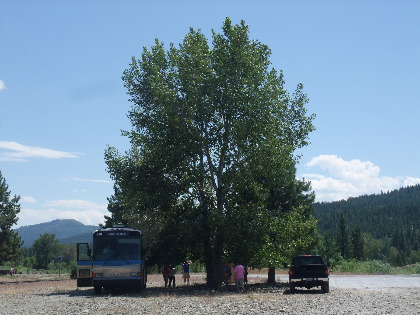
When I posted the first entry on Monday, July 19, I wrote that the Wing Luke Museum of Seattle strives to connect people to history. Based on this year’s Chinese Heritage Tour, it is clear that The Wing also connects people to people.
In big ways.
How so?
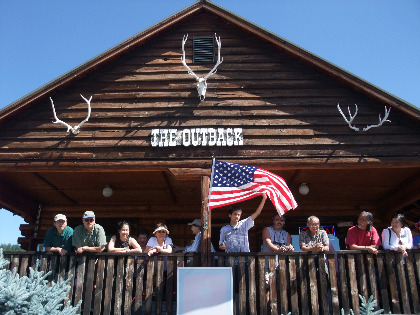
Think about this trip in a series of questions, namely:
-
Why plan this trip in the first place?
-
What was the motivation?
-
Why sit on a bus for hours and hours?
-
Why hike on rock walls?
-
Why visit a town one mile above the sea?
-
Why sit down with historians and archaeologists?
-
Why endure 100-plus temperatures?
-
Why leave the comforts of your own home?
-
Why tell other people your story?
In other words: There must have been something in each participant’s life that acted as an impetus to fill out the registration form, make the payment and then stand in line to board the tour’s big blue bus.
If you wanted pure fun and excitement, you would have zoomed down a water slide.
There must have been something gnawing – and I say that in a good sense – or hovering inside each participant.
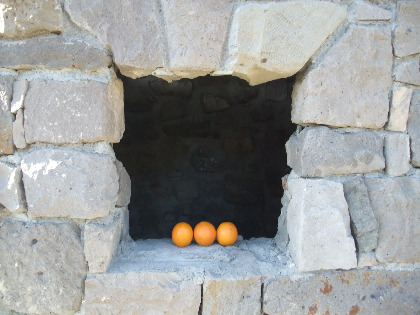
Quite possibly, a need to share.
One way to look at the entire week of visiting important - but often overlooked – historic places involving the Chinese in the American West is this:
-
Were the sites a vehicle to futher the understanding of history?
-
Or did the sites actually serve as a vehicle to bring a group of humans together?
-
Was it a bit of both?
You know, to talk, listen, crack jokes, swap family history, sit in hot temperatures together, take photographs, eat food and jot notes down regarding dates, names and populations?

On those long bus rides through rolling hills and basins, I listened as people asked one another about their lives and listened as the other person shared. I watched as they inspected the sites of old Chinatowns and looked for pieces of the past – shards of bowls or a bottle with Chinese writing on it – and studied photographs.
Those images included Chinese people dressed in frontier clothing and men wearing queues.
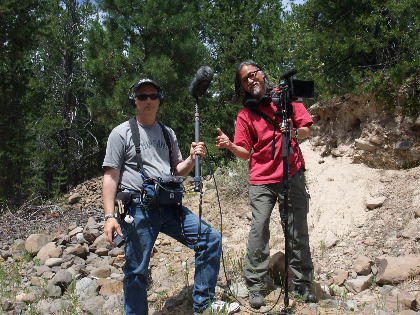
As you know, if no one is next to you when you’re talking about history and sorting through it for your own understanding and where you and your relatives sit in the middle of it, well then, you’re just talking to yourself.
Or you’re talking to the window pane in front of you. But window panes can’t nod, make eye contact or ask you more questions to broaden ideas.
Who can?

The person sitting next to you on a bus.
Or if you think back to the 19th century, the person sitting next to you at a gold mining site and who can speak your Chinese dialect and knows your hometown.
At a group dinner on Sunday, Ron Chew, a university instructor, historian and writer, gave a tip of the hat to the person who came up with the idea for a Wing Luke-affiliated Heritage Tour.
While the first Heritage Tour backed by the museum occurred in 1994, the idea started as a discussion 20 years ago when Dale Hom – now USDA Forest Service supervisor – talked with Chew about these sites in the American West and their relationship to the Chinese in America.
“He was the guy who saw the connection,” Chew said. “Dale is the person who gave birth to this.”
Then, Dorothy Ng, tour coordinator, and Aleta Eng, a tour co-leader, presented Hom with a gift – a hat to make him a Chinese American cowboy, in a sense, before our eyes.
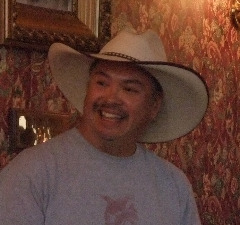
At one point, Chew turned to his sons, Cian and Kino.
“You’ll always have a history here,” he told them.
“We’re standing on the shoulders of those who came before us,” said Bettie Luke, a participant and Seattle resident active in its Asian Pacific American community.
Others chimed in that they were willing to sign up for the next tour.
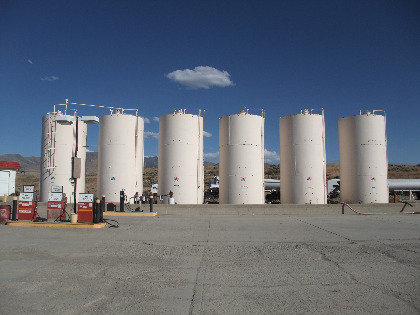
This week’s trip meant that much.
And they already know long bus rides will be a part of any future adventure.
In the 19th century, when the Chinese left places such as Toisan in southern China and arrived in the American West to look for gold or help build the railroads, they often tried to stay with others who could understand them.
They were, you know, in a new place. It could be tough: Racism, squabbles, uncertainty.
That says something not only about the human drive to survive and support loved ones – even though they reside thousands of miles away, across the Pacific Ocean.
But it also says something about the human need to share, have friends and family next to you, enjoy food together, have a conversation, learn and be comfortable – both in your heart and mind.
It kind of helps to take the edge off the fact that you’re standing in the mountains in 90 degrees plus heat, holding a large hose or moving heavy stones in search of gold – but more importantly, a good fortune.
In many ways, this year’s Heritage Tour accomplished some of those very same themes – of connecting with history and becoming friends with the person next to you.
Onward.
– Brad Wong
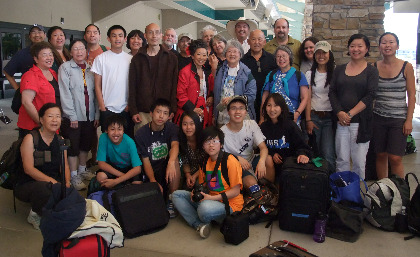
UPDATE (Tuesday, July 27): On late Monday night, the group’s flight arrived safely in Seattle. This is one of the group photos, taken at the Reno airport. Some members had left to start their journeys home.
As Rebecca Hom, a storyteller, observes:
I think we have been ‘home’ this entire week.
NOTE: I hope you’ve enjoyed reading these blog entries. I hope they make sense to you – of course, they make sense to me. And I enjoyed my time riding the bus, hiking in the mountains, listening and asking questions. It’s likely there might be a few more entries to this blog, as others post their photographs or thoughts. But we’ll have a larger travel site down the road.
Comments
Leave a comment Trackback